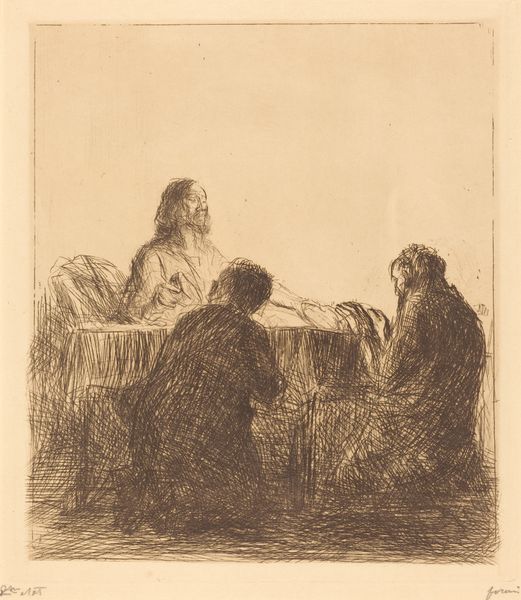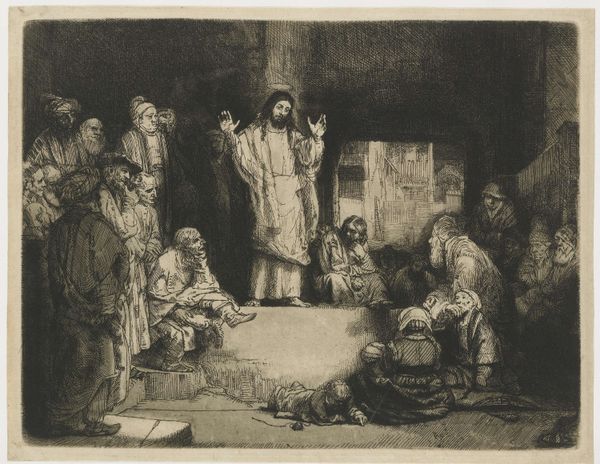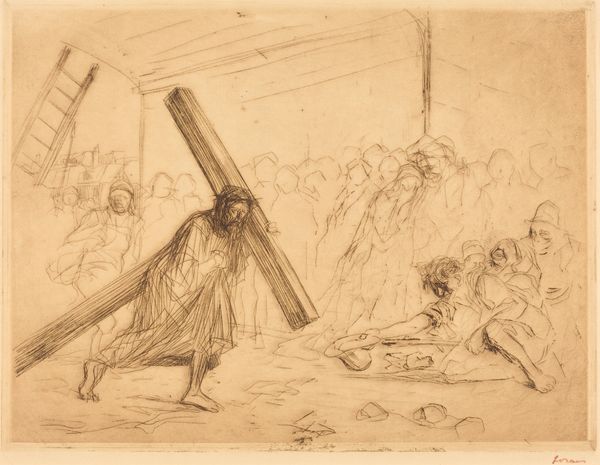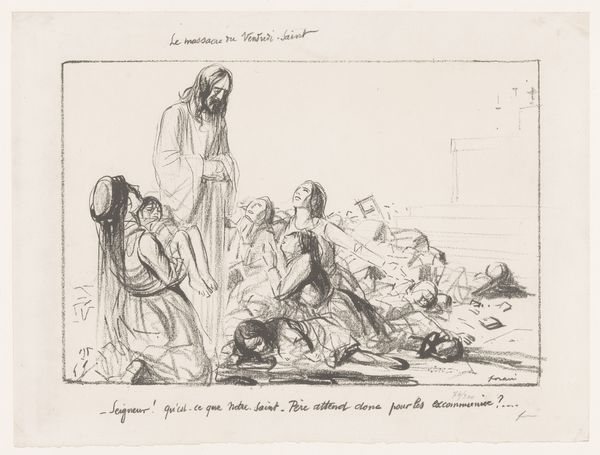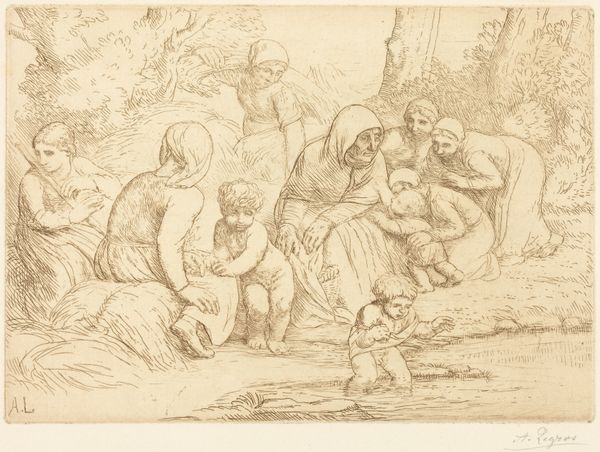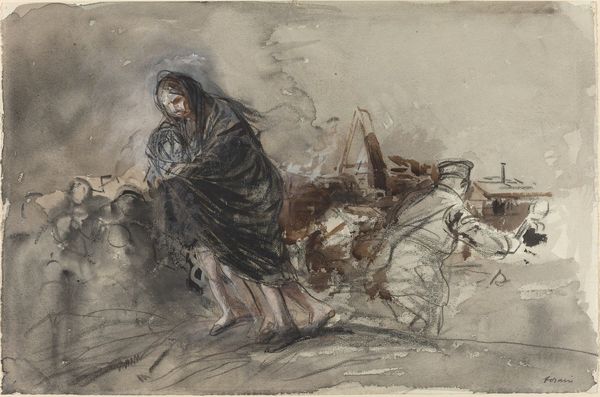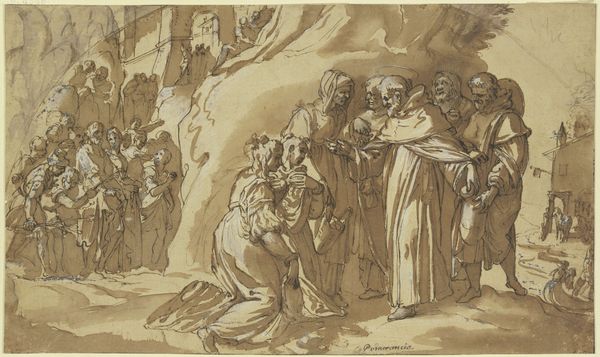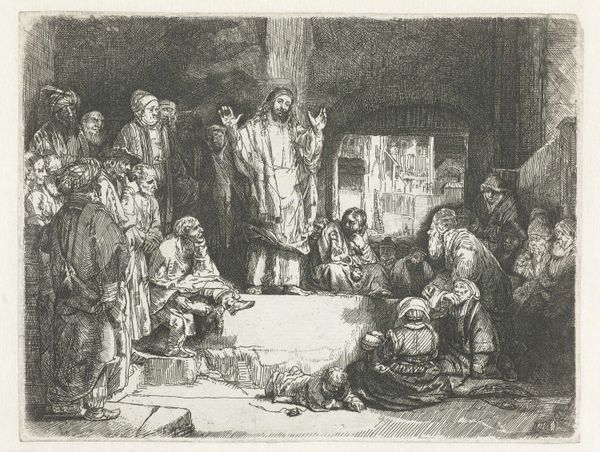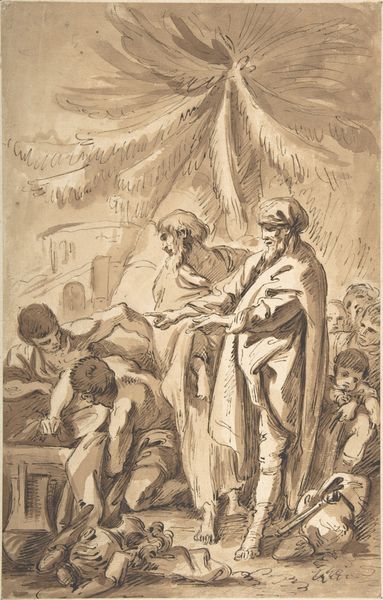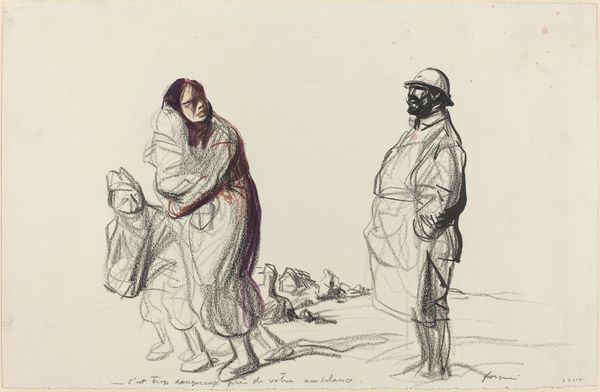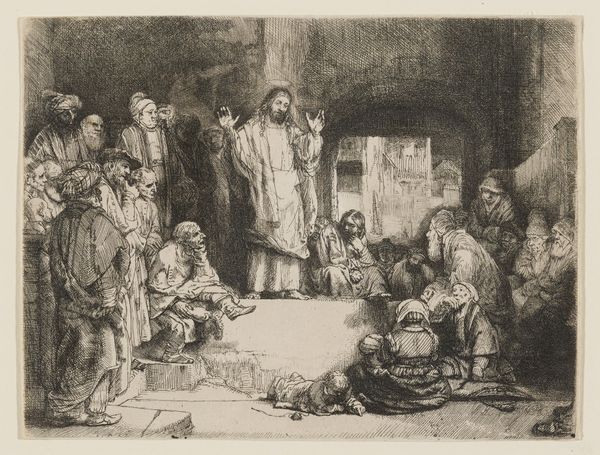
drawing, etching
#
drawing
#
narrative-art
#
impressionism
#
etching
#
figuration
#
history-painting
Copyright: Public Domain: Artvee
Curator: Immediately striking, isn't it? There's such rawness in the composition, and the dynamism, the palpable emotion radiating from this densely etched surface. Editor: This is "The Miracle at Lourdes" by Jean-Louis Forain. Forain was deeply engaged with the social realities of his time. His etchings and drawings, such as this one, provide sharp commentaries on Belle Époque society. Curator: Commentary, yes, but look at the faces, those gestural lines defining such despair and desperate hope. The whole is anchored through repetition – the crowd rendered with uniform, short lines—which is counterpointed with a few, crucial, emotionally wrought individuals given intense and dedicated focalization. Editor: Consider the means of production here, an etching; a method allowing for replication and distribution. Forain uses this to democratize his observations. Think about the consumption of images of Lourdes in late 19th-century France. This artwork engages with a widespread phenomenon. It makes a strong social statement about power structures by showing devotion and how miracles can offer relief from everyday struggles. Curator: Undoubtedly the composition enhances this. The eye is led directly to the figure looking to the heavens, the supplicant's stance mirrored by the faint suggestion of architectural elements above. A deliberate hierarchy and focal plane, emphasizing the miracle's accessibility through a mediator of faith. Editor: But we shouldn't isolate this imagery of devotion from the broader marketplace for religious icons and trinkets. Lourdes became a powerful industry, providing tangible comfort and fueling societal stratification through these objects. This artwork might, therefore, be also highlighting this dynamic relationship between belief, capital, and society during that period. Curator: Perhaps a critique of commodification, and the performance of faith too! Regardless, Forain masterfully uses a limited palette and line work to evoke a deep, melancholic mood, intensified by this intimate proximity between hope and illness. Editor: The beauty here lies not only in its aesthetic impact but also in the critical perspective offered on an era grappling with change, mass production, and widespread societal ailments and needs. Thank you for joining us in looking at it today.
Comments
No comments
Be the first to comment and join the conversation on the ultimate creative platform.
